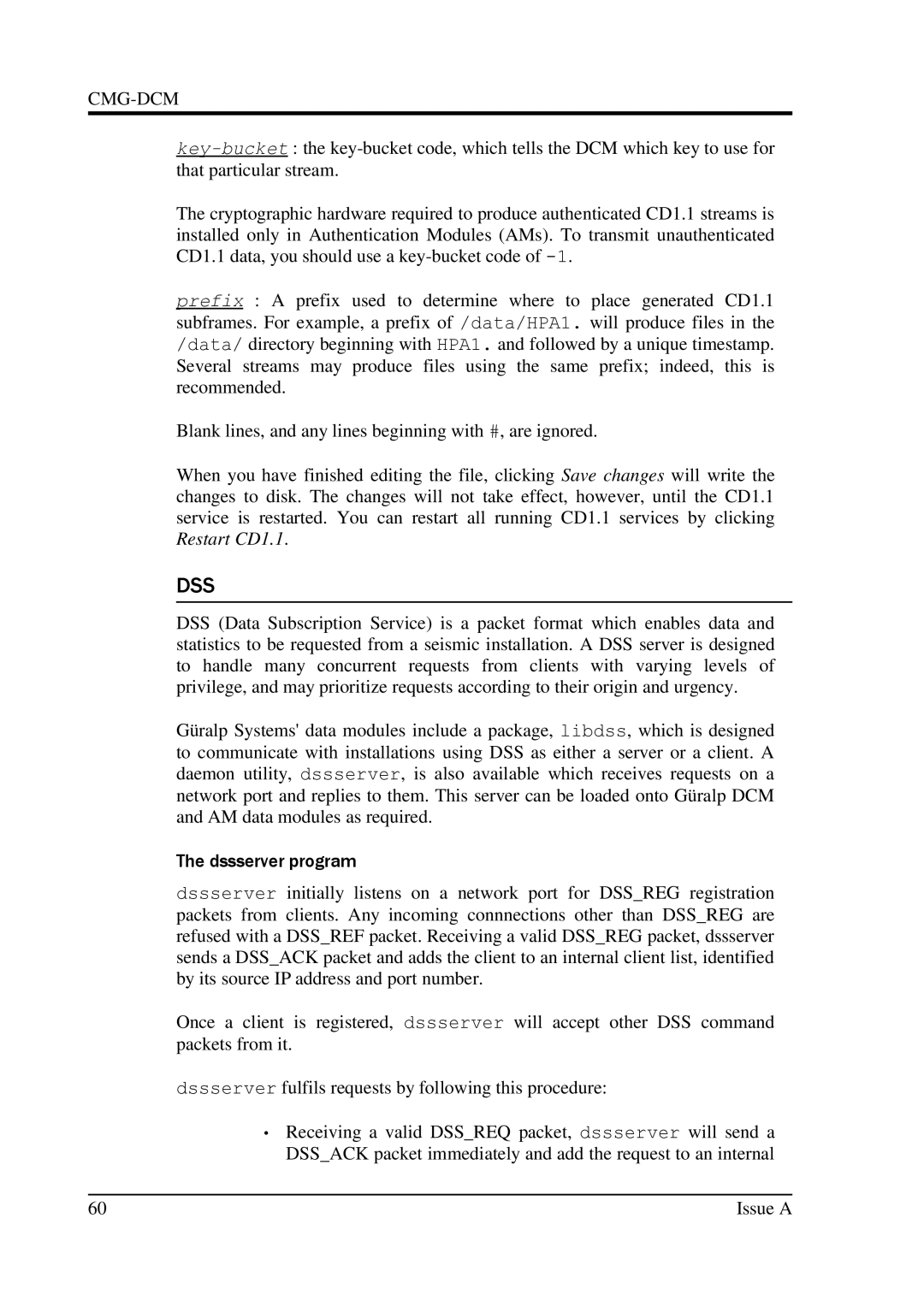
CMG-DCM
The cryptographic hardware required to produce authenticated CD1.1 streams is installed only in Authentication Modules (AMs). To transmit unauthenticated CD1.1 data, you should use a
prefix : A prefix used to determine where to place generated CD1.1 subframes. For example, a prefix of /data/HPA1. will produce files in the /data/ directory beginning with HPA1. and followed by a unique timestamp. Several streams may produce files using the same prefix; indeed, this is recommended.
Blank lines, and any lines beginning with #, are ignored.
When you have finished editing the file, clicking Save changes will write the changes to disk. The changes will not take effect, however, until the CD1.1 service is restarted. You can restart all running CD1.1 services by clicking Restart CD1.1.
DSS
DSS (Data Subscription Service) is a packet format which enables data and statistics to be requested from a seismic installation. A DSS server is designed to handle many concurrent requests from clients with varying levels of privilege, and may prioritize requests according to their origin and urgency.
Gü ralp Systems' data modules include a package, libdss, which is designed to communicate with installations using DSS as either a server or a client. A daemon utility, dssserver, is also available which receives requests on a network port and replies to them. This server can be loaded onto Gü ralp DCM and AM data modules as required.
The dssserver program
dssserver initially listens on a network port for DSS_REG registration packets from clients. Any incoming connnections other than DSS_REG are refused with a DSS_REF packet. Receiving a valid DSS_REG packet, dssserver sends a DSS_ACK packet and adds the client to an internal client list, identified by its source IP address and port number.
Once a client is registered, dssserver will accept other DSS command packets from it.
dssserver fulfils requests by following this procedure:
•Receiving a valid DSS_REQ packet, dssserver will send a DSS_ACK packet immediately and add the request to an internal
60 | Issue A |
